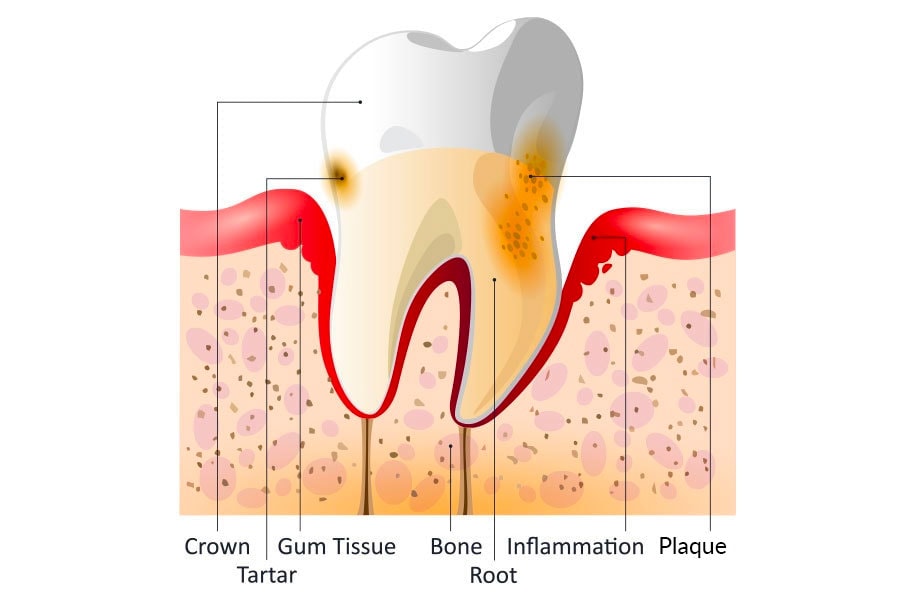What are the Forms of Periodontitis?
The most common forms of Periodontitis are:

Early Periodontitis

Aggressive Periodontitis
- Occurs in patients who are otherwise clinically healthy
- Common features include rapid attachment loss, bone destruction, and familial aggregation (more cases of a given disorder in close relatives of a person with the disorder than in control families)

Chronic Periodontitis
- Most frequently-occurring form of periodontitis
- Characterized by pocket formation and/or recession of the gingiva, resulting in inflammation within the supporting tissues of the teeth, progressive detachment, and bone loss
- Prevalent in adults, but can occur at any age
- Progression of attachment loss usually occurs slowly, but periods of rapid progression can occur
manifestation of systemic disease
- Often begins at a young age
- Systemic conditions such as heart disease, respiratory disease, and diabetes are associated with this form of periodontitis
Necrotizing periodontal disease
also known as trench mouth:
- Severe form of gingivitis that causes painful, infected, bleeding gums and ulcerations
- Most commonly observed in individuals with systemic conditions such as HIV infection, malnutrition, and immunosuppression
